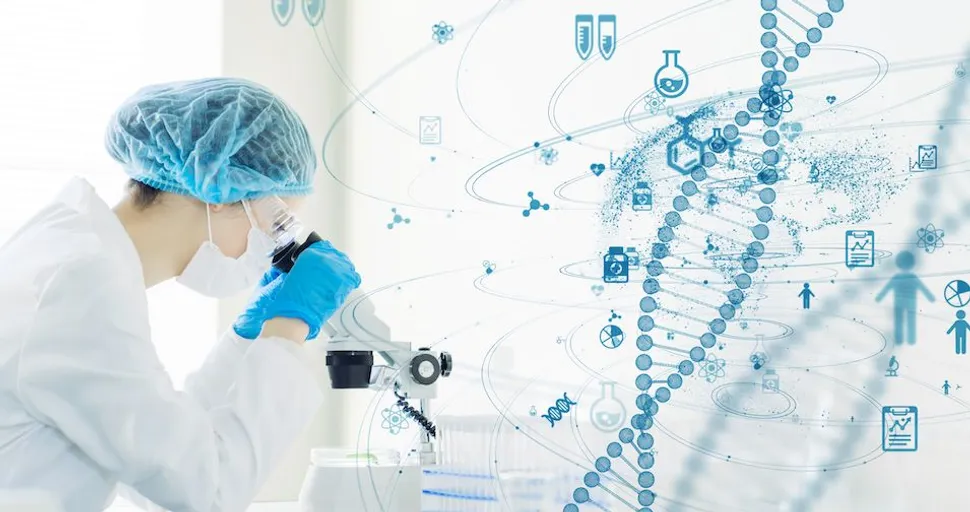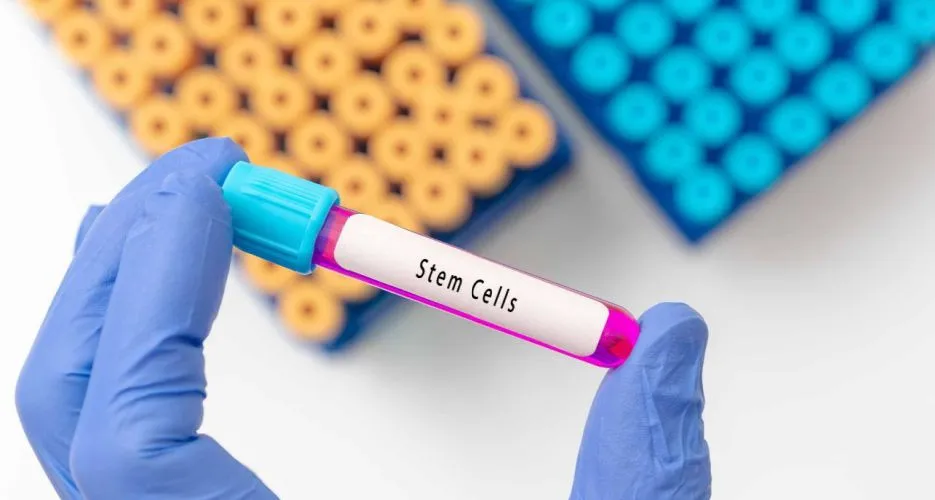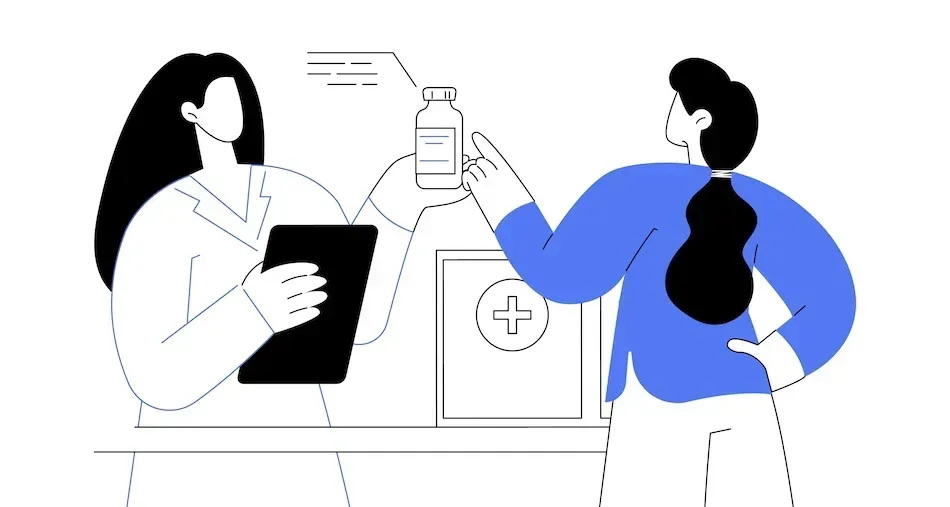New CLL Discovery: Small Molecule FL3 Effect on CLL Cells

CLL is usually a slow-progressing cancer. In some rare cases, CLL cells undergo a change called Richter’s transformation in which they turn into a quickly dividing aggressive type of lymphoma. Dr. Anne Largeot, Ph.D., and her team with the Luxembourg Institute of Health found insight into one of the main causes of high-risk CLL cells multiplying quickly and a new medicine that helped stop CLL cell progression.
The MYC Gene
Their discovery showed the MYC gene inside high-risk CLL cells was often mutated. The MYC gene, located inside of each cell’s DNA, is a set of genetic instructions that when activated, tells the cell to divide quickly. It works by increasing the rate at which cell proteins are created for cell growth and division (these proteins are called prohibitins (PHBs)). It also helps facilitate quick cell division by regulating the cell’s metabolism to fulfill the demands of rapidly dividing cells by enhancing processes that provide the energy materials needed for cell growth.
In normal cells, the MYC gene is only activated at specific intervals. In certain cancer cells like some types of high-risk CLL, the MYC gene is mutated and frequently active, causing quick replication of CLL cells. One of the known causes of the MYC gene mutation is from the Epstein–Barr virus.
Stopping MYC and its Proteins with Small Molecule FL3
Dr. Largeot and her team identified a medicine named FL3 for its capacity to disrupt protein creation in CLL cells. FL3 achieves this by targeting and binding to the PHBs. By attaching to PHBs, FL3 stopped the excessive production of proteins, which is vital for the proliferation and survival of CLL cells.
The uniqueness of FL3 lies in its mechanism of action. Unlike other drugs that target the commonly overactive RAS-RAF-MAPK pathway in cancer, FL3 zooms in on PHBs located near the initiation site of protein synthesis, known as the eIF4F complex. This distinction could offer a new treatment avenue that goes around the pathways that cancer cells frequently exploit to resist treatment.
Experiments conducted in mice with CLL showed that FL3 effectively controlled disease progression, with even more pronounced benefits when combined with other immunotherapies like immune checkpoint inhibitors. This potential new therapy combination could help overcome the treatment resistance that CLL patients with the mutated MYC gene may experience with current CLL therapies.
Further investigation into human CLL samples demonstrated a correlation between increased PHB levels and decreased patient survival, underscoring the relevance of these proteins as targets for treatment. It was evident that CLL cells were more active in protein synthesis compared to their healthy counterparts.
Conclusion
In conclusion, these insights show the possibility of a new type of treatment for CLL - medicines like FL3 that stick to the MYC gene’s created proteins - prohibitins (PHBs). The CLL patient community looks forward to continued research of medicines like PHB-targeted drug development, offering another potential treatment for high-risk types of CLL.
CLL is usually a slow-progressing cancer. In some rare cases, CLL cells undergo a change called Richter’s transformation in which they turn into a quickly dividing aggressive type of lymphoma. Dr. Anne Largeot, Ph.D., and her team with the Luxembourg Institute of Health found insight into one of the main causes of high-risk CLL cells multiplying quickly and a new medicine that helped stop CLL cell progression.
The MYC Gene
Their discovery showed the MYC gene inside high-risk CLL cells was often mutated. The MYC gene, located inside of each cell’s DNA, is a set of genetic instructions that when activated, tells the cell to divide quickly. It works by increasing the rate at which cell proteins are created for cell growth and division (these proteins are called prohibitins (PHBs)). It also helps facilitate quick cell division by regulating the cell’s metabolism to fulfill the demands of rapidly dividing cells by enhancing processes that provide the energy materials needed for cell growth.
In normal cells, the MYC gene is only activated at specific intervals. In certain cancer cells like some types of high-risk CLL, the MYC gene is mutated and frequently active, causing quick replication of CLL cells. One of the known causes of the MYC gene mutation is from the Epstein–Barr virus.
Stopping MYC and its Proteins with Small Molecule FL3
Dr. Largeot and her team identified a medicine named FL3 for its capacity to disrupt protein creation in CLL cells. FL3 achieves this by targeting and binding to the PHBs. By attaching to PHBs, FL3 stopped the excessive production of proteins, which is vital for the proliferation and survival of CLL cells.
The uniqueness of FL3 lies in its mechanism of action. Unlike other drugs that target the commonly overactive RAS-RAF-MAPK pathway in cancer, FL3 zooms in on PHBs located near the initiation site of protein synthesis, known as the eIF4F complex. This distinction could offer a new treatment avenue that goes around the pathways that cancer cells frequently exploit to resist treatment.
Experiments conducted in mice with CLL showed that FL3 effectively controlled disease progression, with even more pronounced benefits when combined with other immunotherapies like immune checkpoint inhibitors. This potential new therapy combination could help overcome the treatment resistance that CLL patients with the mutated MYC gene may experience with current CLL therapies.
Further investigation into human CLL samples demonstrated a correlation between increased PHB levels and decreased patient survival, underscoring the relevance of these proteins as targets for treatment. It was evident that CLL cells were more active in protein synthesis compared to their healthy counterparts.
Conclusion
In conclusion, these insights show the possibility of a new type of treatment for CLL - medicines like FL3 that stick to the MYC gene’s created proteins - prohibitins (PHBs). The CLL patient community looks forward to continued research of medicines like PHB-targeted drug development, offering another potential treatment for high-risk types of CLL.

about the author
Megan Heaps
Megan joined HealthTree in 2022. She enjoys helping patients and their care partners understand the various aspects of the cancer. This understanding enables them to better advocate for themselves and improve their treatment outcomes.
More on Treatment Advances
Trending Articles

Get the Latest Chronic Lymphocytic Leukemia Updates, Delivered to You.
By subscribing to the HealthTree newsletter, you'll receive the latest research, treatment updates, and expert insights to help you navigate your health.
Together we care.
Together we cure.
3x Faster.










